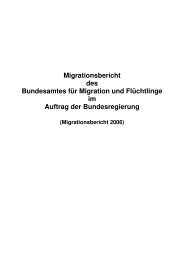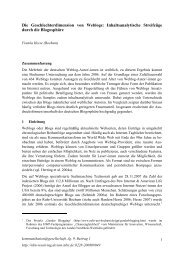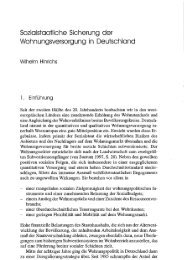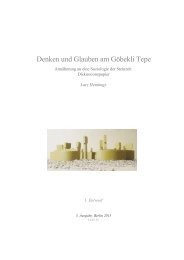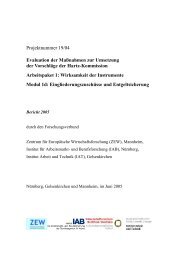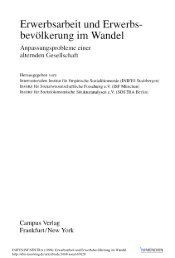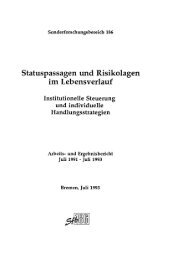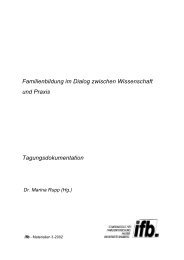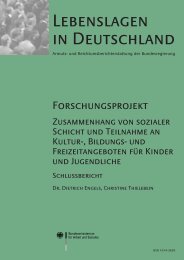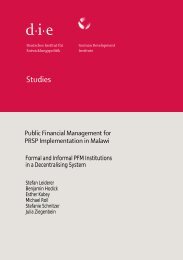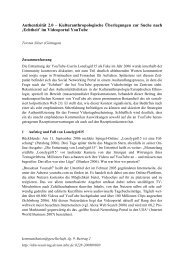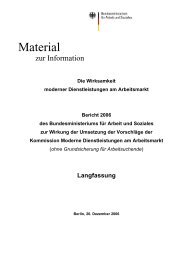Volltext - SSOAR
Volltext - SSOAR
Volltext - SSOAR
- TAGS
- volltext
- ssoar
- www.ssoar.info
Sie wollen auch ein ePaper? Erhöhen Sie die Reichweite Ihrer Titel.
YUMPU macht aus Druck-PDFs automatisch weboptimierte ePaper, die Google liebt.
one of the most illuminating reconstructions of scientific discoveries Norwood<br />
HANSON (1965) utilizes KEPLER's discovery of the planetary orbits to<br />
show that logical inferences which lead to the discovery of new theoretical<br />
insights are neither inductive nor deductive. Instead they represent a special<br />
kind of logical reasoning whose premises are a set of empirical phenomena<br />
and whose conclusion is an explanatory hypothesis.<br />
HANSON called this form of reasoning retroductive inference, in more recent<br />
writings it has been also called “inference to the best explanation“<br />
(ACHINSTEIN 1992). One could also use the term “hypothetical reasoning“<br />
which reflects its specific role in the research process: hypothetical inferences<br />
serve to discover a hypothesis which explains certain empirical findings.<br />
The earliest concepts of hypothetical reasoning were developed by the<br />
pragmatist philosopher Charles Sanders PEIRCE who described a third form<br />
of inference apart from deduction and induction which he called “hypothesis“<br />
or “abduction“. Deductive reasoning is the application of general rules<br />
to specific cases to infer a result.<br />
“The so-called major premise lays down this rule; as for example, 'All men<br />
are mortal'. The other or minor premise states a case under the rule; as<br />
'Enoch was a man'. The conclusion applies the rule to the case and states the<br />
result: 'Enoch is mortal'“ (PEIRCE 1974/1979, 2.621).<br />
Induction is an inversion of this deductive syllogism—by induction one generalises<br />
from a number of cases where a certain result is observed, and infers<br />
to general rule, claiming that these results can be observed in all cases of a<br />
class which the observed cases belong to. Another way of inverting a deductive<br />
syllogism is hypothetical inference which starts with an empirical phenomenon<br />
and proceeds to a general statement which explains the observed<br />
phenomenon. Thereby the researcher either has a general rule at his disposal<br />
that leads to a possible explanation, or the hypothetical inference serves as a<br />
means to discover new, hitherto unknown concepts or rules. Often such an<br />
“abductive“ inference (cf. REICHERTZ 2003) starts by a surprising, anomalous<br />
event which cannot be explained on the basis of previous knowledge:<br />
“The surprising fact, C is observed. But if A were true, C would be a matter<br />
of course. Hence there is a reason to suspect that A is true“ (PEIRCE<br />
1974/1979, 5.189).<br />
Confronted with an anomalous event “we turn over our recollection of observed<br />
facts; we endeavour so to rearrange them, to view them in such new<br />
perspective that the unexpected experience shall no longer appear surprising“<br />
(PEIRCE 1974/1979, 7.36). This is, of course, a creative endeavour which<br />
sometimes “comes to us like a flash“ (PEIRCE 1974/1979, 5.182). Nevertheless,<br />
the researcher's creativity is limited by certain constraints and methodological<br />
rules. First of all, the originality of the newly developed hypotheses is<br />
limited by the facts which must be explained. “It is not pure, ontological<br />
19




